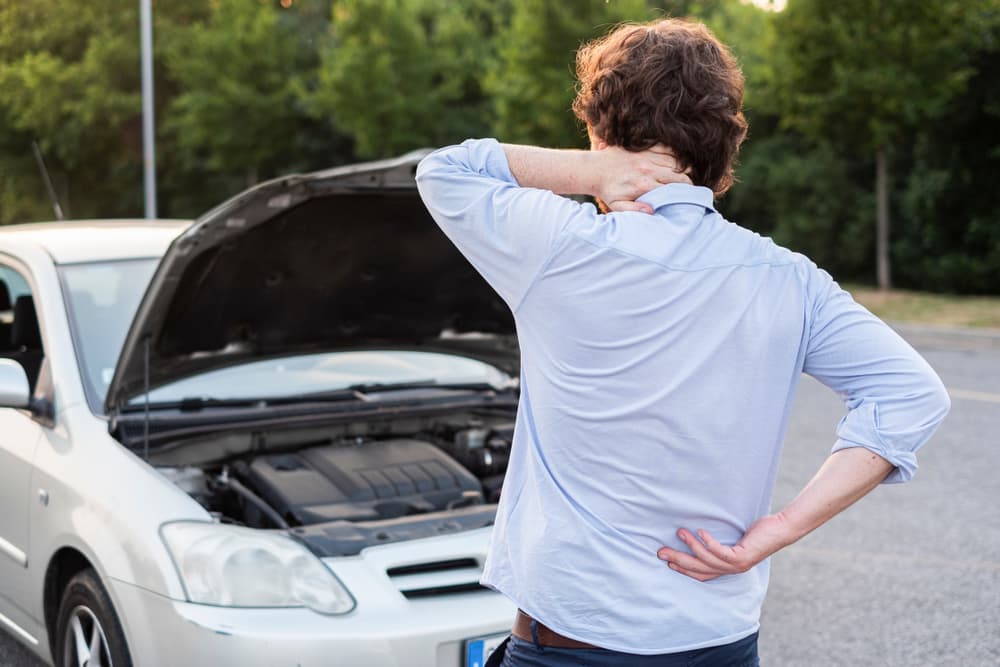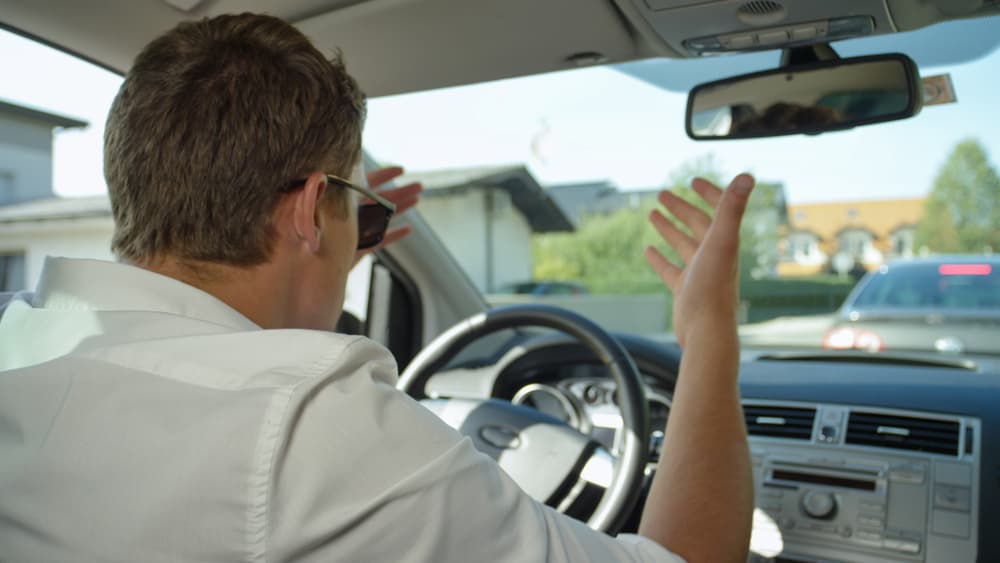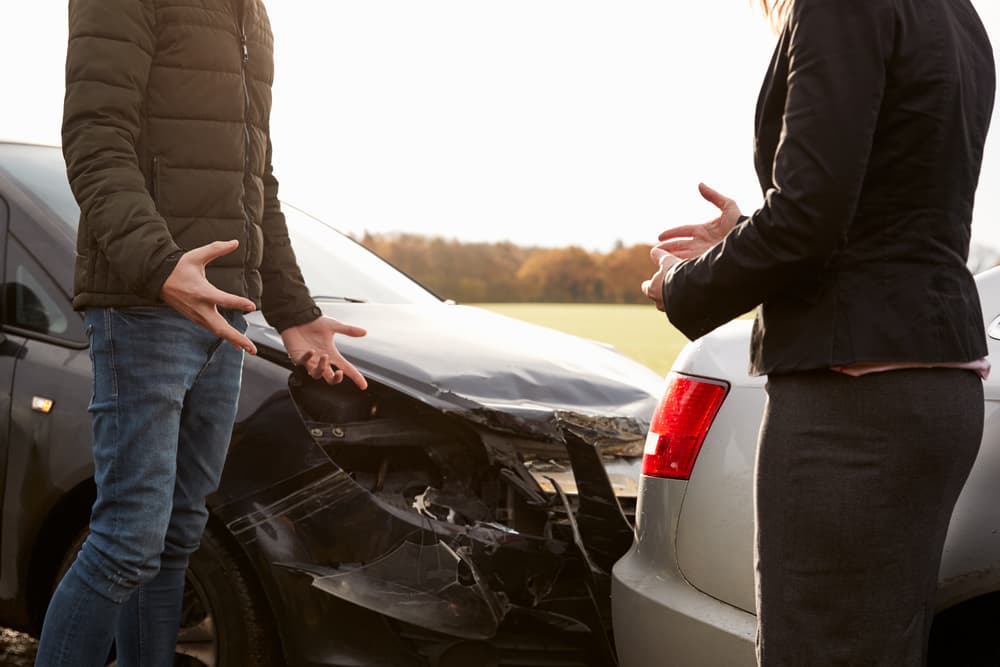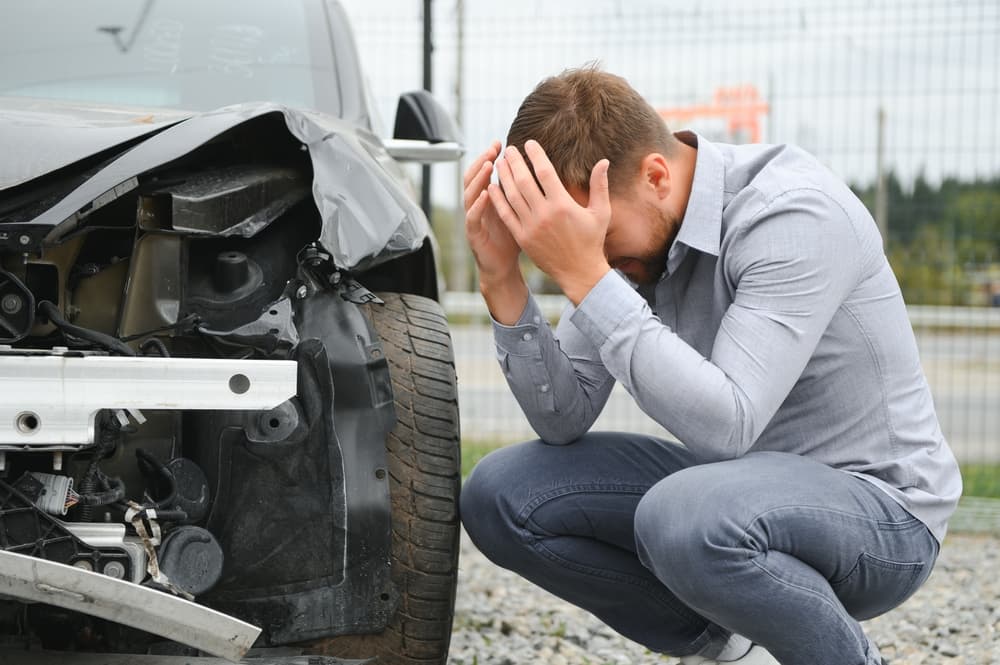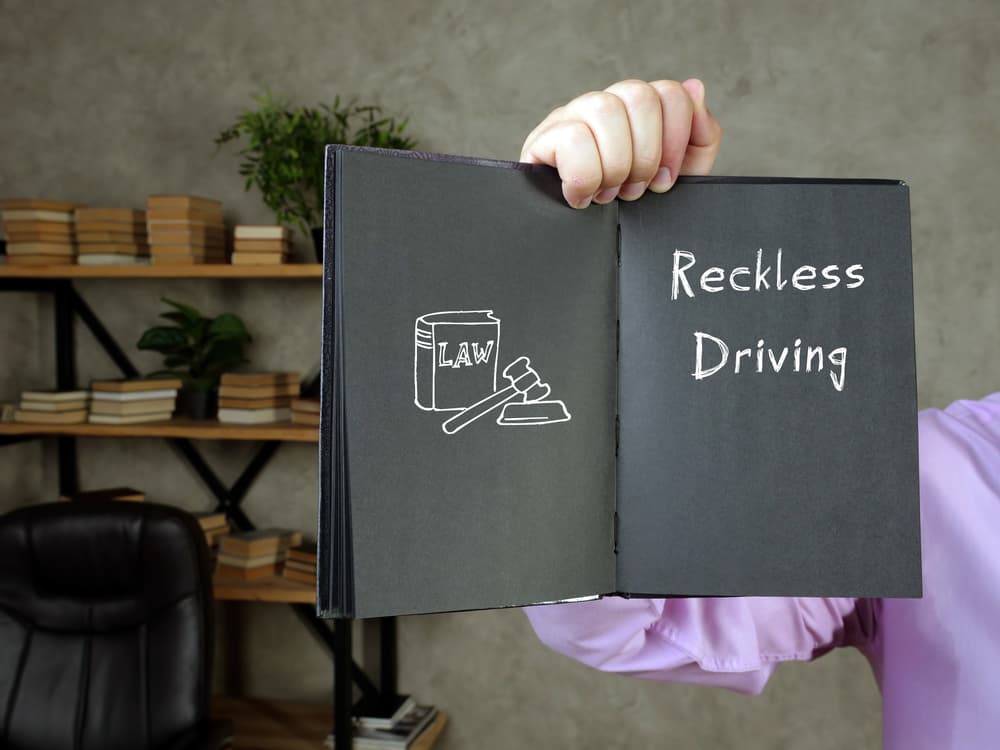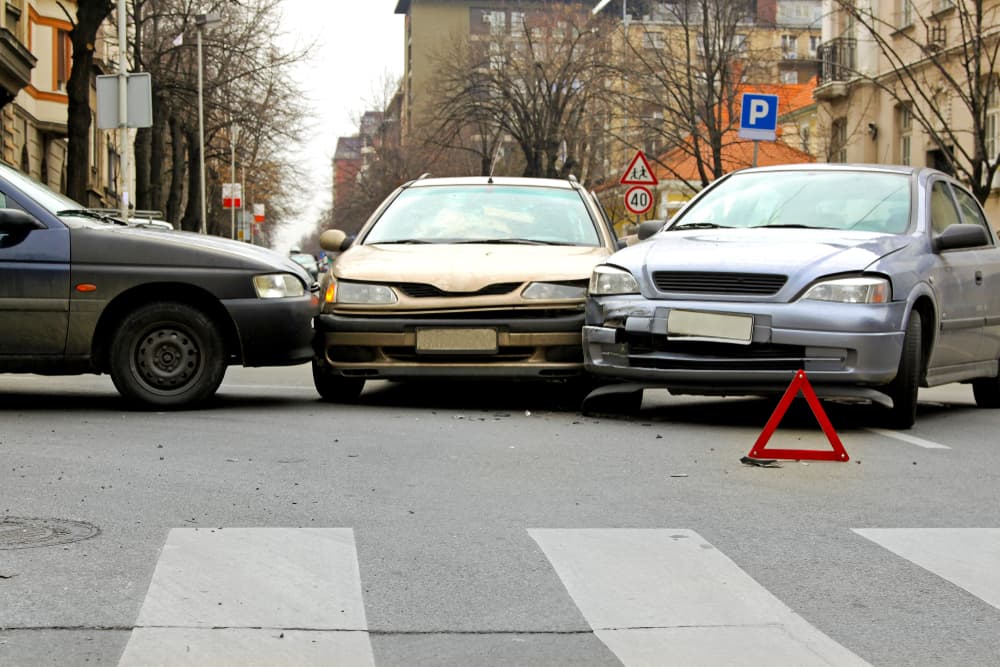Road rage is aggressive or violent behavior by a driver in response to stress or frustration on the road. This can include yelling, honking aggressively, tailgating, cutting off other drivers, or even physical confrontations. Road rage often happens when one driver feels wronged or threatened because of another driver’s actions, and their anger causes them to react dangerously. These actions can lead to serious accidents and injuries and put everyone on the road at risk.
If you suffered injuries in an accident that resulted from another driver’s road rage, you may have legal options available. A skilled motor vehicle accident attorney in your jurisdiction can determine your options and take the appropriate steps to maximize the compensation you receive for your losses.
Schedule a Free Initial Consultation Today!
Three of the Most Common Examples of Road Rage that Cause Accidents
Road rage is a dangerous behavior by others that can quickly turn a normal drive into a hazardous situation. Drivers experiencing intense anger may act recklessly, putting themselves and others at risk. Here are three of the most common examples of road rage that can lead to traffic accidents:
- Tailgating – One of the most frequent forms of road rage is tailgating, where a driver follows the vehicle in front too closely, often in an attempt to intimidate or pressure them to move faster. This aggressive behavior significantly reduces the distance needed to stop in case of an emergency. If the lead car brakes, the tailgating driver is often unable to react in time, causing a rear-end collision. These accidents can result in serious injuries, especially at high speeds.
- Cutting Off Other Drivers – Another common form of road rage involves cutting off other drivers, where an aggressive driver suddenly swerves in front of another car – often without signaling. This reckless behavior is dangerous because it leaves little room for the driver behind to react, which can cause the trailing car to either crash into the vehicle that cut them off or swerve into another lane, risking a multi-car collision. Drivers who cut off others are usually acting out of frustration, which increases the chances of accidents.
- Brake Checking – In response to being tailgated or feeling threatened by another driver, some drivers engage in “brake checking.” This involves slamming on the brakes suddenly to startle the tailgating driver and force them to back off. However, this action is extremely dangerous. If the trailing driver doesn’t have enough time to react, it can easily cause a collision. Brake checking not only endangers the drivers involved but can also affect surrounding vehicles, leading to more accidents.
Common Injuries in Road Rage Accidents
Road rage accidents resulting from other drivers can lead to serious and sometimes life-altering injuries. When a driver acts aggressively or recklessly on the road, it increases the risk of violent collisions. Here are some of the most common injuries that may result from road rage accidents:
- Whiplash and Neck Injuries – One of the most frequent injuries in road rage accidents is whiplash. This occurs when the head is violently jerked back and forth, typically during a rear-end collision. This sudden movement strains the neck muscles and ligaments, causing pain, stiffness, and limited mobility. While whiplash is often associated with rear-end accidents, it can happen in almost any collision – especially if it occurs at a high speed or the involved vehicles stop abruptly.
- Head Injuries and Traumatic Brain Injuries (TBIs) – Head injuries are another common consequence of road rage accidents. These can range from concussions to severe traumatic brain injuries (TBIs). In an accident, a driver’s head may hit the steering wheel, dashboard, or side window, leading to bruising, swelling, or even brain damage. TBIs can have long-term effects, such as memory loss, cognitive impairments, and emotional changes, which can severely affect a person’s overall quality of life.
- Broken Bones and Fractures – The force of impact in road rage accidents often leads to broken bones and fractures. Drivers and passengers may suffer fractures to their arms, legs, ribs, or collarbones, depending on how they are positioned during the crash. Airbags and seatbelts, while essential for safety, can sometimes contribute to fractures as they restrain the body during a high-force collision. Severe fractures may require surgery and extensive recovery time, affecting the victim’s ability to work or carry out daily activities.
- Back and Spinal Cord Injuries – Road rage accidents also commonly cause back injuries, including herniated discs, sprains, and, in more severe cases, spinal cord damage. Spinal injuries can be particularly devastating, as they may lead to chronic pain, limited mobility, or even paralysis. Victims of spinal cord injuries often face long-term rehabilitation and may need to adapt to a reduced quality of life.
These injuries from road rage accidents can result in significant physical, emotional, and financial challenges. Seeking immediate medical attention and legal assistance can help victims recover the compensation they deserve.
How to Prove the Legal Elements of a Road Rage Accident
Proving a road rage accident case requires demonstrating that the other driver’s aggressive behavior caused the crash and resulted in injuries or damages. To do this, certain legal elements must be established. These elements are important in holding the at-fault driver responsible for their actions in a third-party claim or lawsuit. Here are the key components that need to be proven:
- Duty of Care – Every driver on the road has a legal responsibility to drive safely and follow traffic laws. This is called the “duty of care.” In a road rage case, you must first prove that the other driver had a duty to drive in a reasonable manner, which includes following speed limits, signaling, and maintaining a safe distance from other vehicles. This duty is standard in all accident cases.
- Breach of the Legal Duty – The next step is showing that the other driver breached this duty by acting aggressively or recklessly. In road rage cases, common examples of breaches include tailgating, cutting off other drivers, speeding, brake checking, or other forms of dangerous driving. You must provide evidence that the driver’s behavior was unreasonable and reckless under the circumstances. This can be accomplished through witness statements, traffic camera footage, or police reports that document the aggressive driving maneuvers.
- Causation – Once a breach of duty is proven, you must show that the breach directly caused the accident and your injuries. In legal terms, this is known as “causation.” For example, if the aggressive driver tailgated you and caused a rear-end collision, you would need to prove that their tailgating was the direct reason for the crash. Without proving that the driver’s actions caused the accident, it may be difficult to hold them legally responsible.
- Damages – Finally, you must prove that you suffered damages as a direct result of the road rage accident. Damages can include medical bills, lost income, property damage, and pain and suffering. You will need to provide medical records, repair estimates, and other documentation that shows the extent of your losses. The more detailed and thorough your evidence, the stronger your case will be.
Proving these four legal elements – duty of care, breach of duty, causation, and damages – is essential for a successful road rage accident case. A skilled motor vehicle accident lawyer can gather the necessary evidence for you and build a strong claim.
How Can a Lawyer Help with Settling or Litigating a Road Rage Accident Case?
A motor vehicle accident attorney can provide essential help in settling or litigating a third-party road rage accident case. Here are some of the main ways they can assist:
- Gathering Evidence – An attorney will start by gathering important evidence to support your case. This can include police reports, witness statements, traffic camera footage, and medical records. In a road rage incident, having solid evidence is critical to proving that the other driver’s aggressive behavior caused the accident.
- Proving Liability – In a third-party accident claim or lawsuit, it’s essential to prove that the other driver was at fault. A skilled attorney can analyze the facts of the case and work with experts, like accident reconstruction specialists, to show how the other driver’s actions caused the accident. This is important when pursuing compensation, whether through a settlement or in court.
- Negotiating with Insurance Companies – Insurance companies often try to settle for less than what your case is worth – especially in road rage accident cases. An attorney will negotiate with the insurance adjusters on your behalf to ensure that you get fair compensation for medical bills, lost income, pain and suffering, and any other damages. If the insurance company refuses to offer a fair amount, your attorney will be prepared to take your case to court.
- Filing a Lawsuit – If a settlement can’t be reached, a motor vehicle accident attorney can file a lawsuit against the aggressive driver. They’ll handle all of the legal paperwork, deadlines, and procedures involved in taking the case to trial. In court, they will present evidence, question witnesses, and argue your case to secure the fair compensation you deserve.
- Representing You in Court – If the case goes to trial, your attorney will represent you in court and build a strong case to prove that the other driver’s road rage caused the accident. They will cross-examine witnesses, present evidence, and make legal arguments that support your claim for damages.
- Maximizing Compensation – Finally, an attorney will work hard to make sure you receive the maximum compensation possible, whether through settlement or a court judgment. This includes covering medical expenses, vehicle repairs, lost income, and emotional distress resulting from the road rage incident.
By handling the legal aspects, a motor vehicle accident attorney allows you to focus on recovering while they fight for your rights.
Recovering Third-party Damages in a Road Rage Accident Claim or Lawsuit
In a road rage accident claim or lawsuit, victims can recover various forms of damages from the at-fault party (or the at-fault party’s insurance company) to compensate for the injuries and losses they’ve sustained. These damages fall into two main categories: economic and non-economic.
Economic Damages
- Medical Expenses – Victims can recover compensation for both past and future medical costs, including emergency room visits, hospital stays, surgeries, medication, physical therapy, and any other necessary medical treatments.
- Lost earnings – If the victim is unable to work due to injuries from the road rage accident, they may recover compensation for the income they’ve lost while recovering. This includes compensation for any missed promotions or opportunities.
- Loss of Earning Capacity – In more severe cases, road rage accidents can result in permanent disabilities that prevent the victim from returning to their previous job. In these cases, victims may be entitled to compensation for the future income they will be unable to earn due to their diminished ability to work.
- Property Damage – This includes the cost to repair or replace the victim’s vehicle or any other personal property that was damaged in the road rage incident.
Non-Economic Damages
- Pain and Suffering – Victims of road rage accidents often experience significant physical pain and discomfort. Compensation for pain and suffering addresses the physical agony that results from the injuries sustained.
- Emotional Distress – Road rage incidents can cause severe emotional trauma, such as anxiety, depression, and post-traumatic stress disorder (PTSD). Emotional distress damages compensate for the mental toll that the accident has taken on the victim’s well-being.
- Loss of Life Enjoyment – If the injuries from the road rage accident affect the victim’s ability to enjoy daily activities, hobbies, or social interactions, they may receive compensation for this diminished quality of life.
- Loss of Consortium – In some cases, the road rage accident may affect the victim’s relationships with their spouse or family. Loss of consortium damages compensates for the negative effects the accident has on these personal relationships.
Punitive Damages
In cases where the road rage was especially reckless or malicious, courts may award punitive damages. These damages are intended to punish the at-fault driver and deter similar wrongful behavior in the future.
Speak with an Experienced Motor Vehicle Accident Lawyer Today
If you sustained injuries in a motor vehicle crash that resulted from another driver’s road rage, a skilled personal injury lawyer can investigate your accident circumstances and pursue the compensation you deserve. In addition to gathering evidence on your behalf, your lawyer can file a claim with the appropriate insurance company or litigate your case to a swift resolution in the state court system.
